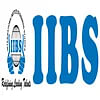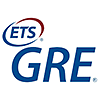Table of Contents
- UPTU (CUET PG) Syllabus 2024
- UPTU 2024 Syllabus for Paper 1 (Physics, Chemistry, and Mathematics)
- UPTU 2024 Syllabus for Paper 2 (Physics, Chemistry, and Biology)
- UPTU 2024 Syllabus for Paper 3 (AG-I, AG-II & AG-III)
- UPTU 2024 Syllabus for Paper 4
- UPTU 2024 Syllabus for Paper 5 (BHMCT/BFAD/BFA)
- UPTU 2024 Syllabus for Paper 6 (Diploma Holders in Engineering)
- UPTU 2024 Syllabus for Paper 7 (Diploma Holders in Pharmacy)
- UPTU 2024 Syllabus for Paper 8 (B.Sc Graduate in Engineering)
- UPTU 2024 Syllabus for Paper 9 (MBA)
- UPTU 2024 Syllabus for Paper 10 (MCA)
- UPTU 2024 Syllabus for Paper 11- 2nd Year MCA (Lateral Entry)
UPTU 2024 admission for various courses will be made based on the candidates scores and performance in the CUET PG 2024 examination. Thus, candidates must follow the CUET PG exam syllabus to get admission into various UPTU 2024 courses.
Dr. Abdul Kalam Technical University is responsible for finalizing the UPTU syllabus 2024. The syllabus is an important parameter for students to score a good rank in the examination. Another important facet that must be checked is the UPTU exam pattern 2024 to help the applicants devise an effective strategy to attempt the question paper.
The conducting authorities prepare different sets of question papers, each of which has different questions or the same questions written in a different order. The candidates can crack the UPTU 2024 with strong preparation. The syllabus for every paper/subject is given on this page.
UPTU (CUET PG) Syllabus 2024
Applicants must be aware that the UPTU 2024 admissions will be done based on the CUET PG 2024 scores achieved by the candidates. Thus, the detailed syllabus for CUET PG is shared below for candidates use.
- Agribusiness Management
- Agroforestry
- Anthropology
- Applied Arts
- Biochemistry
- Chemistry
- Civil Engineering
- Data Science, Artificial, Cyber Security
- Dharm Vijnan
- Electronics and Communication
- Embedded and Real Time System
- Environmental Science
- Food Science and Technology
- Geography
- Journalism and Mass Communication
- Painting
- Textile Design
UPTU 2024 Syllabus for Paper 1 (Physics, Chemistry, and Mathematics)
Applicants must know that if the UPTU 2024 will be conducted by the authority then they must follow the detailed syllabus for UPTU 2024 shared below. The first paper of UPTU/UPSEE 2024 has three sections- Physics, Chemistry, and Mathematics.
The section will comprise 150 questions in total. Each question will carry 4 marks. In total, the question paper will carry 600 marks. Candidates can check the syllabus and important topics for UPTU for each of the sections given below:
Section A: UPTU Syllabus 2024 for Physics
The aspirants must check the UPSEE Syllabus for Physics given below.
Bulk ModulusShear Modulus of RigidityVariations of Pressure with DepthBuoyant Forces and Archimedes PrinciplePascal's LawBernoulli's Theorem and its ApplicationSurface EnergySurface TensionAn Angle of ContactCapillary RiseA Coefficient of ViscosityViscous ForceTerminal VelocityStoke's LawStreamline MotionReynold's Numbers.
| Topics | Contents |
| Measurement | Dimensional Analysis and Error Estimation Dimensional Compatibility Significant Figures. |
| Motion in One Dimension | Average Velocity Instantaneous Velocity One-Dimensional Motion with Constant Accelerations Freely Falling Bodies |
| Motion in Two Dimensions | Projectile Motion Uniform Circular Motion Tangential and Radial Acceleration in Curve-Linear Motion Relative Motion Relative Acceleration. |
| Work, Power, and Energy | Work done by Constant and Variable Forces Kinetic and Potential Energy Power Conservative and Non-Conservative Forces Conservation of Energy Gravitational Energy Work-Energy Theorem Potential Energy Stored in the Spring |
| Linear Momentum & Collisions | Linear Momentum & Impulse Conservation of Linear Momentum for a Two-Particle System Collisions Collision in One Dimension Collision in Two Dimensions Rocket Propulsion |
| Rotation of a Rigid Body about a Fixed Axis | Angular Velocity and Angular Acceleration Rotational Kinematics Rotational Motion with Constant Angular Acceleration Relationship Between Angular and Linear Quantities Rotational Energy A Moment of Inertia for a Ring, Rod, Spherical Shell, Sphere, and Plane Lamina Torque and Angular Acceleration Work, and Energy in Rotational Motion Rolling Motion of a Solid Sphere and Cylinder. |
| Gravitation | Planetary and Satellite Motion Geostationary Satellite |
| Oscillatory Motion | Harmonic Motion Oscillatory Motion of a Mass Attached to a Spring Kinetic & Potential Energy Period of a Simple Pendulum Comparing the Simple and Harmonic Motion with Uniform Circular Motion Forced Oscillations Damped Oscillations Resonance |
| Mechanics of Solids and Fluids | |
| Heat and Thermodynamics | Black Body Radiation Wien's Displacement Law Stefan's Law |
| Wave | Propagation of Sound Waves in Air The Effect of Temperature and Pressure on the Velocity of Sound Laplace's Correction Principle of Superposition The Formation of Standing Waves Standing Waves in Strings and Pipes Beats Doppler's Effect |
| Electrostatics | Coulomb's Law Electric Field and Potential Due to a Point Charge Dipole and its Field Along Axis and Perpendicular to an Axis Electric Flux Gauss's Theorem and its Applications to Find Field Due to an Infinite Sheet of Charge, and Inside Hollow Conducting Sphere Capacitance Parallel Plate Capacitor with Air and Dielectric Medium Between Plates Series and Parallel Combination of Capacitors Energy of a Capacitor Displacement Currents |
| Current Electricity | Resistivity Conductivity Temperature Dependency of Resistance Resistance in Series and Parallel Combination Kirchoff’s Law and their Application to the Network of Resistances The Principle of the Potentiometer The Effect of Temperature on Resistance and its Application |
| Magnetic Effect of Current | Magnetic Field Due to Solenoid A Motion of Charge in a Magnetic Field The Force on a Current-Carrying Conductor and Torque on a Current Loop in a Magnetic Field Magnetic Flux Forces Between Two Parallel Current-Carrying Conductors Moving Coil Galvanometer and its Conversion into Ammeter and Voltmeter |
| Magnetism in Matter | |
| Electromagnetic Induction | Induced e.m.f. Faraday's Laws Lenz's Law Electromagnetic Induction Self and Mutual Induction B-H Curve Hysteresis Loss and its Importance Eddy Current |
| Ray Optics and Optical Instruments | A Reflection of Light Total Internal Reflection Reflection and Refraction at Spherical Surfaces The Focal Length of a Combination of Lenses Spherical and Chromatic Aberration and their Removal Refraction and Dispersion of Light Due to a Prism Simple and Compound Microscope Reflecting and Refracting Telescope Magnifying Power and Resolving Power |
| Wave Optics | Diffraction Due to a Single Slit Linearly Polarized Light Polaroid |
| Modern Physics | Photo-Electric Equation Matter Waves Quantization Planck's Hypothesis Bohr's Model of the Hydrogen Atom and its Spectra Ionization Potential Rydberg Constant Solar Spectrum and Fraunhofer Lines Fluorescence and Phosphorescence X-Rays and their Productions Characteristic and Continuous Spectra |
| Nuclear Instability | Radioactive Decay Laws Emission of Alpha, Gamma, Beta Rays Mass - a Defect Mass Energy Equivalence Nuclear Fission Nuclear Reactors Nuclear Fusion |
| Classification of Conductors | Insulators and Semiconductors Based on Energy Bands in Solids PN Junction PN Diode, Junction Transistors Transistor as an Amplifier Oscillator |
| Principles of Logic Gates (AND, OR and NOT) | Analog Vs Digital Communication Difference Between Radio and Television Signal Propagation Principle of Laser and Maser Population Inversion Spontaneous and Stimulated Emission |
Section B: UPTU Syllabus 2024 for Chemistry
The spirants must check the UPTU exam syllabus for Chemistry given below.
| Topic | Contents |
| Atomic Structure | Bohr's Concept Quantum Numbers Electronic Configuration Molecular Orbital Theory for Homonuclear Molecules Pauli's Exclusion Principle |
| Chemical Bonding | Electrovalency Co-Valency Hybridization Involving s,p, and d Orbitals Hydrogen Bonding |
| Redox Reactions | Oxidation Number Oxidizing and Reducing Agents Balancing of Equations |
| Chemical Equilibrium and Kinetics | Equilibrium Constant for the Gaseous System Only Le Chaterlier's a Principle Ionic Equilibrium Ostwald's Dilution Law Hydrolysis pH and Buffer Solution Solubility Product A Common-Ion Effect Rate Constant First-Order Reaction |
| Acid-Base Concepts | Bronsted Lowry & Lewis |
| Electrochemistry | Electrode Potential and Electrochemical Series |
| Catalysis | Types and Applications |
| Colloids | Types and Preparation Brownian Movement Tyndall Effect Coagulation Peptization |
| Colligative Properties of Solution | Lowering of Vapour Pressure Osmotic Pressure Depression of Freezing Point The Elevation of Boiling Point Determination of Molecular Weight |
| Periodic Table | Classification of Elements Based on Electronic Configuration Properties of s,p, and d Block Elements Ionization Potential Electronegativity & Electron Affinity |
| Preparation and Properties | Alums White and Red Lead Microcosmic Salt and Bleaching Powder Sodium Thiosulphate |
| Thermochemistry | |
| General Organic Chemistry | Shape of Organic Compounds Inductive Effect Mesomeric Effect Electrophiles & Nucleophiles Reaction Intermediates: Carbonation, Carbanions & Free Radical Types of Organic Reactions Cannizzaro Friedel Craft Perkin, Aldol Condensation |
| Isomerism | Structural, Geometrical & Optical |
| IUPAC | Nomenclature of Simple Organic Compounds |
| Polymers | Addition & Condensation Polymers |
| Carbohydrates | Monosaccharides |
| Preparation and Properties | Hydrocarbons Monohydric Alcohols Aldehydes Ketones Monocarboxylic Acids Primary Amines Benzene Nitrobenzene Aniline Phenol Benzaldehyde Benzoic Acid Grignard Reagent |
| Solid State | Structure of Simple Ionic Compounds Crystal Imperfections (Point Defects Only) Born-Haber Cycle |
| Petroleum | Important Industrial Fractions Cracking Octane Number Anti Knocking Compounds |
Section C: UPTU 2024 Syllabus for Mathematics
The aspirants must check the UPTU exam syllabus for Mathematics given below.
| Topics | Contents |
| Algebra | Sets Relations & Functions De-Morgan's Law Mapping Inverse Relations Equivalence Relations Peano's Axioms Definition of Rationals and Integers through Equivalence Relation Indices and Surds Solutions of Simultaneous and Quadratic Equations A.P., G.P. and H.P. Special Sums i.e. ∑n2 and ∑n3 (n∑N ) Partial Fraction Binomial Theorem for any Index Exponential Series Logarithm and Logarithmic Series Determinants and their Use in Solving Simultaneous Linear Equations Matrices, Algebra of Matrices Inverse of a Matrix Use of a Matrix for Solving Equations |
| Probability | Definition Dependent and Independent Events Numerical Problem on Addition and Multiplication The Theorem of Probability |
| Trigonometry | |
| Co-ordinate Geometry | Pair of Straight Lines Circles General Equation of Second Degree Parabola, Ellipse and Hyperbola Tracing of Comics |
| Calculus | Limits & Continuity of Functions Differentiation of Function, Tangents & Normal Simple Examples of Maxima & Minima Indeterminate Forms Integration of Function by Parts by Substitution and by Partial Fraction Definite Integral Application to Volumes and Surfaces of Frustums of the Sphere, Cone and Cylinder Differential Equations of the First Order and First Degree |
| Vectors | Algebra of Vectors, Scalar, and Vector Products of Two and Three Vectors and their Applications |
| Dynamics | Velocity A Composition of Velocity Relative Velocity Acceleration The Composition of Accelerations Motion under Gravity Projectiles Laws of Motion Principles of Conservation of Momentum and Energy A Direct Impact of Smooth Bodies |
| Statics | Composition of Coplanar Concurrent and Parallel Forces Moments and Couples Resultant of a Set of Coplanar Forces and Condition of Equilibrium Determination of Centroid in Simple Cases, Problems involving Friction |
UPTU Syllabus 2024 PDF Download (Paper - 1)
UPTU 2024 Syllabus for Paper 2 (Physics, Chemistry, and Biology)
The question paper for UPTU/UPSEE-Paper 2 will be divided into three sections- Physics, Chemistry, and Biology. The topics covered under each section are given below:
Section A: UPTU Syllabus 2024 for Physics
The important topics for UPTU in Physics and the contents are as given below.
Bulk ModulusShear Modulus of RigidityVariations of Pressure with DepthBuoyant Forces and Archimedes PrinciplePascal's LawBernoulli's Theorem and its ApplicationSurface EnergySurface TensionAn Angle of ContactCapillary RiseA Coefficient of ViscosityViscous ForceTerminal VelocityStoke's LawStreamline MotionReynold's Numbers.
| Topics | Contents |
| Measurement | Dimensional Analysis and Error Estimation Dimensional Compatibility Significant Figures. |
| Motion in One Dimension | Average Velocity Instantaneous Velocity One-Dimensional Motion with Constant Accelerations Freely Falling Bodies |
| Laws of Motion | |
| Motion in Two Dimensions | Projectile Motion Uniform Circular Motion Tangential and Radial Acceleration in Curve-Linear Motion Relative Motion Relative Acceleration. |
| Work, Power, and Energy | Work done by Constant and Variable Forces Kinetic and Potential Energy Power Conservative and Non-Conservative Forces Conservation of Energy Gravitational Energy Work-Energy Theorem Potential Energy Stored in the Spring |
| Linear Momentum & Collisions | Linear Momentum & Impulse Conservation of Linear Momentum for a Two-Particle System Collisions Collision in One Dimension Collision in Two Dimensions Rocket Propulsion |
| Rotation of a Rigid Body about a Fixed Axis | Angular Velocity and Angular Acceleration Rotational Kinematics Rotational Motion with Constant Angular Acceleration Relationship Between Angular and Linear Quantities Rotational Energy A Moment of Inertia for a Ring, Rod, Spherical Shell, Sphere, and Plane Lamina Torque and Angular Acceleration Work, and Energy in Rotational Motion Rolling Motion of a Solid Sphere and Cylinder. |
| Gravitation | Planetary and Satellite Motion Geostationary Satellite |
| Oscillatory Motion | Harmonic Motion Oscillatory Motion of a Mass Attached to a Spring Kinetic & Potential Energy Period of a Simple Pendulum Comparing the Simple and Harmonic Motion with Uniform Circular Motion Forced Oscillations Damped Oscillations Resonance |
| Mechanics of Solids and Fluids | |
| Heat and Thermodynamics | Black Body Radiation Wien's Displacement Law Stefan's Law |
| Wave | Propagation of Sound Waves in Air The Effect of Temperature and Pressure on the Velocity of Sound Laplace's Correction Principle of Superposition The Formation of Standing Waves Standing Waves in Strings and Pipes Beats Doppler's Effect |
| Electrostatics | Coulomb's Law Electric Field and Potential Due to a Point Charge Dipole and its Field Along Axis and Perpendicular to an Axis Electric Flux Gauss's Theorem and its Applications to Find Field Due to an Infinite Sheet of Charge, and Inside Hollow Conducting Sphere Capacitance Parallel Plate Capacitor with Air and Dielectric Medium Between Plates Series and Parallel Combination of Capacitors Energy of a Capacitor Displacement Currents |
| Current Electricity | Resistivity Conductivity Temperature Dependency of Resistance Resistance in Series and Parallel Combination Kirchoff’s Law and their Application to the Network of Resistances The Principle of the Potentiometer The Effect of Temperature on Resistance and its Application |
| Magnetic Effect of Current | Magnetic Field Due to Solenoid A Motion of Charge in a Magnetic Field The Force on a Current-Carrying Conductor and Torque on a Current Loop in a Magnetic Field Magnetic Flux Forces Between Two Parallel Current-Carrying Conductors Moving Coil Galvanometer and its Conversion into Ammeter and Voltmeter |
| Magnetism in Matter | |
| Electromagnetic Induction | Induced e.m.f. Faraday's Laws Lenz's Law Electromagnetic Induction Self and Mutual Induction B-H Curve Hysteresis Loss and its Importance Eddy Current |
| Ray Optics and Optical Instruments | A Reflection of Light Total Internal Reflection Reflection and Refraction at Spherical Surfaces The Focal Length of a Combination of Lenses Spherical and Chromatic Aberration and their Removal Refraction and Dispersion of Light Due to a Prism Simple and Compound Microscope Reflecting and Refracting Telescope Magnifying Power and Resolving Power |
| Wave Optics | Diffraction Due to a Single Slit Linearly Polarized Light Polaroid |
| Modern Physics | Photo-Electric Equation Matter Waves Quantization Planck's Hypothesis Bohr's Model of the Hydrogen Atom and its Spectra Ionization Potential Rydberg Constant Solar Spectrum and Fraunhofer Lines Fluorescence and Phosphorescence X-Rays and their Productions Characteristic and Continuous Spectra |
| Nuclear Instability | Radioactive Decay Laws Emission of Alpha, Gamma, Beta Rays Mass - a Defect Mass Energy Equivalence Nuclear Fission Nuclear Reactors Nuclear Fusion |
| Classification of Conductors | Insulators and Semiconductors Based on Energy Bands in Solids PN Junction PN Diode, Junction Transistors Transistor as an Amplifier Oscillator |
| Principles of Logic Gates (AND, OR and NOT) | Analog Vs Digital Communication Difference Between Radio and Television Signal Propagation Principle of Laser and Maser Population Inversion Spontaneous and Stimulated Emission |
Section B: UPTU Syllabus 2024 for Chemistry
The syllabus for UPTU Chemistry includes the following mentioned topics.
| Topic | Contents |
| Atomic Structure | Bohr's Concept Quantum Numbers Electronic Configuration Molecular Orbital Theory for Homonuclear Molecules Pauli's Exclusion Principle |
| Chemical Bonding | Electrovalency Co-Valency Hybridization Involving s,p, and d Orbitals Hydrogen Bonding |
| Redox Reactions | Oxidation Number Oxidizing and Reducing Agents Balancing of Equations |
| Chemical Equilibrium and Kinetics | Equilibrium Constant for the Gaseous System Only Le Chaterlier's a Principle Ionic Equilibrium Ostwald's Dilution Law Hydrolysis pH and Buffer Solution Solubility Product A Common-Ion Effect Rate Constant First-Order Reaction |
| Acid-Base Concepts | Bronsted Lowry & Lewis |
| Electrochemistry | Electrode Potential and Electrochemical Series |
| Catalysis | Types and Applications |
| Colloids | Types and Preparation Brownian Movement Tyndall Effect Coagulation Peptization |
| Colligative Properties of Solution | Lowering of Vapour Pressure Osmotic Pressure Depression of Freezing Point The Elevation of Boiling Point Determination of Molecular Weight |
| Periodic Table | Classification of Elements Based on Electronic Configuration Properties of s,p, and d Block Elements Ionization Potential Electronegativity & Electron Affinity |
| Preparation and Properties | Alums White and Red Lead Microcosmic Salt and Bleaching Powder Sodium Thiosulphate |
| Thermochemistry | |
| General Organic Chemistry | Shape of Organic Compounds Inductive Effect Mesomeric Effect Electrophiles & Nucleophiles Reaction Intermediates: Carbonation, Carbanions & Free Radical Types of Organic Reactions Cannizzaro Friedel Craft Perkin, Aldol Condensation |
| Isomerism | Structural, Geometrical & Optical |
| IUPAC | Nomenclature of Simple Organic Compounds |
| Polymers | Addition & Condensation Polymers |
| Carbohydrates | Monosaccharides |
| Preparation and Properties | Hydrocarbons Monohydric Alcohols Aldehydes Ketones Monocarboxylic Acids Primary Amines Benzene Nitrobenzene Aniline Phenol Benzaldehyde Benzoic Acid Grignard Reagent |
| Solid State | Structure of Simple Ionic Compounds Crystal Imperfections (Point Defects Only) Born-Haber Cycle |
| Petroleum | Important Industrial Fractions Cracking Octane Number Anti Knocking Compounds |
Section C: UPTU 2024 Syllabus for Biology (Zoology)
The candidates must check the UPTU entrance exam syllabus for Biotechnology mentioned below.
| Topics | Contents |
| Origin of Life | Oparin's Theory Miller's Experiment Viruses - Structure, Properties, Distribution, Classification, and Pathogenesis (Eg. AIDS, CANCER) Viroids & Prions Biotic Balance |
| Organic Evolution | Relationship Among Organisms and Evidence of Organic Evolution Principles of Evolution Lamarckism, Darwinism, and Speciation |
| Mechanism of Organic Evolution | Variations - Definition, Causes and Types Mutations (Principles of Hugo Deliveries) Role of Mutations in Speciation Evolution through Ages and Human Evolution |
| Human Genetics and Eugenics | Human Hereditary Traits A Study of Twins A.B.O. Blood Groups and their Inheritance Rh-factor Sex Determination Chromosomal Aberrations Important Human Syndromes Sex-linked Characters and their Inheritance Applied Genetics - Eugenics, Euthenics, Euphenics & I.Q. Test |
| Applied Biology | Wildlife of India - Endangered Species: Biosphere Reserves National Parks and Sanctuaries Project Tiger Conservation of Wildlife Bio-Energy Poultry Fisheries (Edible Fishes) Human Population Population Explosion Problems & Control Test-Tube Babies & Amniocentesis Application of Biotechnology in Human Welfare Human Aging |
| Mammalian Anatomy (Eg. Rabbit) | Reproductive System (Excluding Embryonic Development) Osteology Structure and Organization of Different Systems |
UPTU 2024 Syllabus for Animal Physiology
The syllabus for Animal Physiology includes a wide range of topics that are mentioned below:
| Topics | Contents |
| Animal Nutrition | Food Balanced Diet Nutritional Imbalances and Deficiency Diseases Digestion Absorption Assimilation of Food, (Comparison Between Human and Rabbit) |
| Animal Excretion and Osmoregulation | Chemical Nature of Excretory Products in Various Animals Physiology of Excretion Function of Liver and Kidney (Homeostatic Regulatory Functions of Kidneys) Formation of Urine Osmoregulation by Kidneys |
| Respiratory System | Exchange and Transport of Gases (O2 and Co2) Factors Affecting O2 and Co2 Transport Cellular Respiration Different Lung Volumes Breathing and Sound Production. |
| Nervous Systems | Central, Autonomic and Peripheral Nervous System Receptors, Effectors, Reflex Action Nature and Conduction of Nerve- Impulses, Synapse, Sense Organs Structure & Working of Eye & Ear Biochemistry of Vision and Taste Buds |
| Endocrine System | Different Endocrine Glands and Hormones - Definition, Types, Characteristics and their Functions, (Concerning Human Beings) Hormonal Disorders and Pheromones |
| Circulatory System | Circulation of Body Fluids- Blood and Lymph Open and Closed Vascular Systems Structure and Working Physiology of Heart Comparison between Arteries and Veins Lymphatic System |
| Animal Diversity | Classification of Animal Kingdom (Based on Storar & Eisinger) Characteristic Feature of Different Phyla and Classes with Examples |
| Protozoa | Amoeba- Habit & Habitat Structure Locomotion Reproduction Osmoregulation Parasitic Amoebae - Entamoeba Histolytica and Entamoeba gengivalis, Structure, Diseases Caused by them and their Control Measures Plasmodium Vivax-Life-Cycle Malaria Therapy and Control Protozoan and Diseases. |
| Porifera | A Simple Sponge ( Leucosolenia) Detailed Study of Structure & Physiology Sponge Industry |
| Coelenterata | Hydra - Habit and Habitat Morphology Tissue Differentiation Concerning the Physiological Division of Labour and Regeneration |
| Aschelminthes | Ascaris- Morphology Life-cycle Therapy and Control. |
| Annelida | Pheretima Posthuma - Bionomics and Economic Importance. |
| Arthropoda (Periplaneta) | Structure- External and Internal. Comparison between Periplaneta and Blatta. Housefly & Mosquito: Structure and Life – Cycle Economic Importance of Insets & their Control. |
UPTU 2024 Syllabus for Botany
Some of the major topics of Botany that the candidates need to study in their course are detailed below.
| Topics | Contents |
| Plant Cell | Structure & Functions Electron Microscopic Structured Mitochondria Plastids Centrosomes Lysosomes Microsomes Endoplasmic reticulum Nucleus Golgi Bodies D.N.A & R.N.A Cytoplasm Membranes and Cell wall |
| Protoplasm | Structure, Components Physical and Chemical Properties Cell Division (Formation) - Free Cell Formation, Amitosis & Meiosis Duplication of D.N.A. |
| Ecology | Ecological Factors (Atmospheric, Edaphic, Climatic, Geological & Biotic Factors) Ecosystem: Structure, Components of Ecosystem eg. Water-soluble Minerals and Gases, Producers Consumers, Decomposers, Pond and Forest Ecosystem Atmospheric Pollution- Causes and Control Types of Pollution - Detergents, Chemicals Automobile Exhaust, Radioactive Matter, Smog, Sound, Pesticides |
| Genetics | Modern Classification of the Plant Kingdom- (According to Ostwald & Tippo - Outline) |
| Seeds in Angiospermous Plants | Description of the Development of Angiospermous Plants (Life History of Angiospermous Plants) |
| Fruits | Dispersal of Fruits and Seeds |
| Cell Differentiation Plant Tissue | Meristimatic Classification of Meristematic & Permanent Tissue and Functions and Classification of Tissue System |
| Anatomy of Root, Stem, and Leaf | Difference Between Dicot and Monocot Stem Secondary Growth of Stem and Root Anatomy of Hydrophytes, Xerophytes & Mesophytes |
| Important Phyla | Algae Bacteria Fungi Bryophyta Pteridophyta |
| Soil | Growth & Movement: Definition of Growth, Region of Growth & their Measurements Types of Movements in Plants Growth Hormone |
UPTU Syllabus 2024 PDF Download (Paper - 2)
UPTU 2024 Syllabus for Paper 3 (AG-I, AG-II & AG-III)
The candidates who wish to do an in-depth study of Agriculture through UPTU are expected to be well-versed with the topics mentioned below. The detailed syllabus for Paper 3 is discussed below:
AG – I: UPTU Syllabus 2024 for Agricultural Physics and Chemistry
The topics and contents for Agicultural Physics and Chemistry are as given below.
| Topics |
Contents
|
| Agricultural Physics |
Unit
Measurement Vernier, Screw Gauge Force-analysis Force Parallelogram A Momentum of Force Equilibrium of Forces Velocity and Acceleration Speed Laws of Motion Gravitational Motion Acceleration Due to Gravity Circular Motion Centrifugal and Centripetal Forces Pressure Capillary Force and Tension Atmospheric Surface-Barometer Boyle’s Law Friction and Simple Example of its Laws Working of Common Pumps Operation, Performance Power and Energy Heat and Temperature Radiation, Convection and Conduction Heat Conductance Specific Heat Concerning Solids Physical Change in Solid Due to Heat Latent Heat A Relationship Between Heat and Work Dewpoint, Relative Humidity, and its Determination The Formation of Clouds, Fog Frost, Snow and Halls Weather and its Forecasting. |
| Agricultural Chemistry | Ionic Theory The Difference Between Atom and Ion Explanation of Following with the Help of Ionic Theory, Electrolysis, Acid, Alkali,Salt, Water, Hydrolysis and Neutralisations Oxidation and Reduction Classification of Elements. |
| Inorganic Chemistry |
Water and its Hardness
Methods of Treatment of Hard Water and Soft Water The Occurrence of Compounds Properties, and Uses of the Following Elements: Nitrogen, Ammonia, Nitric Acid, Carbon, Carbon Dioxide, Phosphoric Acid, Sulphur Dioxide, Sulphuric Acid, Chlorine, Hydrochloric Acid. Occurrence Properties, Use and their Functions in Plants of Following: Sodium, Sodium Chloride, Sodium Hydroxide, Sodium Carbonate, Sodium Bicarbonate, Sodium Phosphate, Sodium Nitrate, Potassium Sulphate, Calcium, Calcium Oxide, Calcium Carbonate, Calcium Sulphate and Calcium Nitrate, Iron, Sulphate and Iron Phosphate, Aluminium, Aluminium Sulphate and Aluminium Phosphate Nitrogen Cycle Fixation of Nitrogen in the Soil The Function of Super-Phosphate and Phosphorus in a Plant Nitrogen Fertilizers. |
| Organic Chemistry |
Formation of Organic Compounds
Physical Properties Nomenclature General Knowledge of Following Compounds, Simple Formulae, General Properties and Main Uses, a Structural Formula: Hydrocarbon (Saturated and Unsaturated), Alcohol Ethyl Alcohol and Glycol, Aldehyde and Ketones, Formaldehyde, Acetone, Amine and Oxide, Methyl and Ethylamine, Urea, Acids: Acetic, Benzoic, Lactic, Oxalic Acids, Fats and Oils, Soap and Saponification, Carbohydrates, Glucose, Fructose, Starch Simple Methods of Making Benzene and Phenol and their Properties. |
AG-II: UPTU Syllabus 2024 for Agricultural, Engineering, and Statistics
Agriculture, Engineering, and Statistics are considered as some of the major subjects in the entire course, and all the topics that they include are as given below.
| Topics | Contents |
| Agricultural Engineering | Properties of Different Materials Used in Agricultural Implements Classification of Plough their Merits, Comparison, Common Troubles in their Operation and Precautions Maintenance, Assembly, Cost and Comparison of Cultivation Harrow, Hoe, Float, Scraper and Seed Drill A Draft of Implements, their Measurements, Factors Affecting the Draft. Water Lifts, their Discharge, Capacities, Command Area, and Cost of Irrigation (Water Lifts should include Common Water Lifts and Low Lift Pumps). Tillage and Ploughing, Types of Ploughing, and their Merits. Types and Objects Tillage. Chemical and Physical Effects of Tillage Practices for Different Crops. Transmission of Power through Gears. Pulleys and Belts, Hand-operated Chaff Cutters, Cane Crusher, Winnowing Fan, and Splad Threshers |
| Agricultural Statistics | Collection of Data Classification and Tabulation Frequency Distribution Mean and their Kinds Merits, and Demerits. Measurements of Dispersion. |
AG – III: UPTU Syllabus 2024 for Agronomy and Agricultural Botany
The syllabus for Agricultural Botany and Agronomy for the year has the following essential things.
| Topics | Contents |
| Agronomy | Crops- Cultivation, Practices of Common Crops of India and their Varieties Soils- Origin, Classification and Physical Properties of Soils, Soil Conservation Manures, And Manuring- Nutrients for Plants Growth, Uptake of N.P.K. Organic and Inorganic Fertilizers, Farmyard and Green Manures Manures, And Manuring- Nutrients for Plants Growth, Uptake of N.P.K. Organic and Inorganic Fertilizers, Farmyard and Green Manures, their Properties and Method of Application, Knowledge of Following Manures and Fertilizer: FYM, Compost, Urinated Soil, Castor, and Groundnut Cake, Ammonium Sulphate, Sodium Nitrate, Super Phosphate, Potassium Sulphate, Urea, CAN Ammonium Chloride and Mixtures Irrigation & Drainage- Methods, Measurement, and Type of Irrigation and Drainage Systems, Cultivation Practices of Common Vegetable and Fruit Crops. |
| Agricultural Botany | External Morphology of Plants, Function, and Modification of Stem, Root, and Leaves, Structure and Function of Different Parts of a Flower Type of Inflorescence, Pollen, and Pollination Classification, Structure, Germination, and Dispersal of Seeds Type of Function, and their Dispersal The Internal Morphology of Plant Cell Reproductive Organs of Angiosperms Knowledge of the Structure of Rlltharis, Absorption, Respiration, Transpiration, and Carbon Assimilation Root Pressure, Translocation of Foods and Storage Introductory Knowledge of Taxonomy and Plant Kingdom especially Regional and Horticultural Plants Laminaries Cruciferease, Leguminaceae, Cucurbitaceae, Solanaceae, Malvaceae, Elementry Knowledge of Mosses, Ferns, Mucous, Bacteria |
UPTU 2024 Syllabus PDF Download (Paper - 3)
UPTU 2024 Syllabus for Paper 4
Paper 4 of UPTU 2024 will be divided into three sections- Mathematics, Aesthetic Sensitivity, and Drawing Aptitude. The topics covered under each of the three subjects are given below for your reference:
Part A: UPTU Syllabus 2024 for Mathematics
The topics and contents for UPTU Mathematics syllabus is as given below.
| Topics | Contents |
| Algebra | Sets Relations & Functions De-Morgan's Law Mapping Inverse Relations Equivalence Relations Peano's Axioms Definition of Rationals and Integers through Equivalence Relation Indices and Surds Solutions of Simultaneous and Quadratic Equations A.P., G.P. and H.P. Special Sums i.e. ∑n2 and ∑n3 (n∑N ) Partial Fraction Binomial Theorem for any Index Exponential Series Logarithm and Logarithmic Series Determinants and their Use in Solving Simultaneous Linear Equations Matrices, Algebra of Matrices Inverse of a Matrix Use of a Matrix for Solving Equations |
| Probability | Definition Dependent and Independent Events Numerical Problem on Addition and Multiplication The Theorem of Probability |
| Trigonometry | |
| Co-ordinate Geometry | Pair of Straight Lines Circles General Equation of Second Degree Parabola, Ellipse and Hyperbola Tracing of Comics |
| Calculus | Limits & Continuity of Functions Differentiation of Function, Tangents & Normal Simple Examples of Maxima & Minima Indeterminate Forms Integration of Function by Parts by Substitution and by Partial Fraction Definite Integral Application to Volumes and Surfaces of Frustums of the Sphere, Cone and Cylinder Differential Equations of the First Order and First Degree |
| Vectors | Algebra of Vectors, Scalar, and Vector Products of Two and Three Vectors and their Applications |
| Dynamics | Velocity A Composition of Velocity Relative Velocity Acceleration The Composition of Accelerations Motion under Gravity Projectiles Laws of Motion Principles of Conservation of Momentum and Energy A Direct Impact of Smooth Bodies |
| Statics | Composition of Coplanar Concurrent and Parallel Forces Moments and Couples Resultant of a Set of Coplanar Forces and Condition of Equilibrium Determination of Centroid in Simple Cases, Problems involving Friction |
Part B: UPTU 2024 Syllabus for Aesthetic Sensitivity:
Aesthetic Sensitivity Test is aimed to evaluate a candidate for the following topics.
- Aesthetic Perception, Imagination, and Observation
- Creativity and Communication and Architectural Awareness
- Visualizing Three-Dimensional Objects from Two-Dimensional Drawings
- Visualizing Different Sides/ Surfaces of Three-Dimensional Objects
- Identifying Commonly Used Materials and Objects Based on their Textural Qualities
- Analytical Reasoning
- Mental Ability
- Imaginative Comprehension and Expression
- Architectural Awareness.
Part C: UPTU Syllabus 2024 for Drawing Aptitude
Drawing Aptitude Test is aimed to evaluate a candidate for the following.
- Understanding of Scale and Proportion
- Sense of Perspective, Colour and Understanding of Effects of Light on Objects through Shades and Shadows
- Ability to Sketch a Given Object Proportionately and Rendering Same in a Visually Appealing Manner
- Visualising and Drawing Effects of Light on the Objects and their Shadow Cast on Surroundings
- Sense of Perspective Drawing
- Combining and Composing given Three-Dimensional Elements to Form a Building or Structural Form
- Creating Interesting Two-Dimensional Compositions Using Given Shapes or Planner forms
- Creating Visual Harmony Using Colours in Given Composition
- Understanding of Scale and Sense of Proportion.
UPTU 2024 Syllabus PDF Download (Paper - 4)
UPTU 2024 Syllabus for Paper 5 (BHMCT/BFAD/BFA)
The candidates who are planning to pursue BHMCT, BFAD, or BFA must prepare the topics given below, to clear the UPSEE/UPTU examination.
UPTU Syllabus 2024 for Reasoning & Logical Deduction
The UPTU syllabus for Reasoning and Logical Deduction is as given below.
- Geometrical Designs & Identification.
- Selection of Related Letters / Words / Numbers / Figures.
- Identification of Odd Things/ Items out from a Group.
- Completion of Numerical Series based on Pattern/ Logic.
- Fill in the Blanks of the Series Based on Numerical Pattern and Logic of Series.
- Syllogisms (Logic-Based Questions), Identification of Logic & Selection of Correct Answers Based on Logic.
UPTU Syllabus 2024 for Numerical Ability & Scientific Aptitude
The syllabus for Numerical Ability and Scientific Aptitude is as follows.
- Arithmetical Questions up to the 10th Standard.
- Calculation of Fractions, Percentages, Square Roots, etc.
- Profit & Loss and Interest Calculations.
- Data / Table analysis, Graph & Bar Diagram, and Pie Chart analysis.
- Questions related to the Common use of Science (Physics & Chemistry).
- Health & Nutrition.
UPTU Syllabus 2024 for General Knowledge
The General Knowledge syllabus for UPTU 2024 us as follows.
- Current Affairs / Events (Political, Social, Cultural & Economics).
- Historical Events.
- Geography including Tourist Places / Spots.
- Current affairs relating to Business & Trade.
- Countries & Currencies.
- Latest Who's Who?
- Sports & Games.
UPTU Syllabus 2024 for the English Language
The syllabus for the English language comprises of the following mentioned things for the year:
- Word Meanings.
- Antonyms & Synonyms.
- Meaning of Phrases & Idioms.
- Fill in the blanks.
- Complete / Improvement of sentences with the correct use of Pronouns, Verbs, Adverbs & Adjectives.
- Reading comprehension's followed by questions.
UPTU Syllabus 2024 PDF Download (Paper - 5)
UPTU 2024 Syllabus for Paper 6 (Diploma Holders in Engineering)
Paper 6 in the UPTU is conducted for diploma holders in Engineering and their syllabus has the following mentioned topics.
Syllabus for Diploma Holders in Engineering
The syllabus for diploma holders in Engineering is as follows.
- Engineering Mechanics
- Engineering Graphics.
- Basic Electrical Engg.
- Basic Electronics Engg.
- Elements of computer science.
- Elementary Biology.
- Basic Workshop Practice.
- Physics/ Chemistry/ Maths of Diploma Standard.
UPTU Syllabus 2024 PDF Download (Paper - 6)
UPTU 2024 Syllabus for Paper 7 (Diploma Holders in Pharmacy)
Paper 7 for diploma holders in Pharmacy includes the various topics as mentioned below.
Syllabus for UPTU 2024 Exam-Related with Diploma in Pharmacy
The syllabus for UPTU exam-related with diploma in Pharmacy is as given below.
- Pharmaceutics-I.
- Pharmaceutical Chemistry - I.
- Pharmacognosy.
- Biochemistry and Clinical Pathology.
- Human Anatomy and Physiology.
- Health Education & Community Pharmacy.
- Pharmaceutics - II.
- Pharmaceutical Chemistry - II.
- Pharmacology and Toxicology.
- Pharmaceutical Jurisprudence.
- Drug Store and Business management.
- Hospital and Clinical Pharmacy.
UPTU Syllabus 2024 PDF Download (Paper - 7)
UPTU 2024 Syllabus for Paper 8 (B.Sc Graduate in Engineering)
To pursue B.Sc. from Dr. Abdul Kalam Technical University, the candidates will have to appear for the entrance exam conducted by the university. The candidates will have to answer questions based on the topics mentioned below.
Syllabus for UPTU 2024 B.Sc. Graduate in Engineering
The syllabus for UPTU B.Sc. graduate in Engineering is as follows.
| Topics | Contents |
| Linear Algebra | Matrix Algebra Systems of Linear Equations Eigenvalues and Eigenvectors |
| Calculus | Mean Value Theorems Theorems of Integral Calculus Evaluation of Definite and Improper Integrals Partial Derivatives Maxima and Minima Multiple Integrals Fourier Series Vector Identities Directional Derivatives Line, Surface and Volume Integrals Stokes Gauss and Green’s Theorems |
| Differential Equations | First Order Equation (Linear and Nonlinear), Higher Order Linear Differential Equations with Constant Coefficients Method of Variation of Parameters Cauchy’s and Euler’s Equations Initial and Boundary Value Problems Linear Partial Differential Equations with Constant Coefficients of 2nd Order and their Classifications and Variable Separable Method |
| Complex Variables | Analytic Functions Cauchy’s Integral Theorem and Integral Formula Taylor’s and Laurent’ Series Residue Theorem Solution Integrals |
| Probability and Statistics | Sampling Theorems Conditional Probability Mean, Median, Mode and Standard Deviation Random Variables Discrete and Continuous Distributions Poisson, Normal and Binomial Distribution Correlation and Regression Analysis |
| Fourier Series | Functions Having an Arbitrary Period Change of an Interval Even and Odd Functions Half Range Sine and Cosine Series |
| Transform Theory | Laplace Transform Laplace Transform of Derivatives and Integrals Inverse Laplace Transform Laplace Transform of Periodic Functions Convolution Theorem Application to Solve Simple Linear and Simultaneous Differential Equations |
| Fourier Integral | Fourier Complex Transform Fourier Sine and Cosine Transforms, and Applications to Simple Heat Transfer Equations Z – transform and its Application to Solving Differential Equations |
UPTU Syllabus 2024 PDF Download (Paper - 8)
UPTU 2024 Syllabus for Paper 9 (MBA)
The test is aimed at evaluating verbal ability, quantitative aptitude, logical & abstract reasoning, and knowledge of current affairs. Following is a brief description of the contents of the UPTU MBA syllabus.
| Sections | Contents |
| Section A (English Language) | Grammar Vocabulary Uncommon Words Sentence Completion Synonyms, Antonyms A Relationship Between Words & Phrases Comprehension of Passages. |
| Section B (Numerical Aptitude) | Numerical Calculation Arithmetic, Simple Algebra Geometry and Trigonometry Interpretation of Graphs, Charts, and Tables. |
| Section C (Thinking and Decision Making) | Creative Thinking Unfamiliar Relationships Verbal Reasoning Finding Patterns Trends Assessment of Figures & Diagrams |
| Section D (General Awareness) | Knowledge of Current Affairs and Other Issues Related to Trade, Industry, Economy, Sports, Culture, and Science |
UPTU Syllabus 2024 PDF Download (Paper - 9)
UPTU 2024 Syllabus for Paper 10 (MCA)
UPTU MCA entrance exam syllabus 2024 will have questions based on the below-mentioned topics.
Statistics: Theory of probability, Mean, Median, Mode, Dispersion, and Standard Deviation.
Logical Ability: Questions to test the analytical and reasoning capability of candidates.
Apart from Statistics and Logical Ability, this paper consists of questions from topics in Mathematics as well.
UPTU Syllabus 2024 for Mathematics
The UPTU syllabus for Mathematics for paper 10 is as follows.
| Topics | Contents |
| Modern Algebra | Idempotent Law Identities Complementary Laws Demorgan’s Theorem Mapping Inverse Relation Equivalence Relation Piano’s Axiom A Definition of Rational Numbers and Integers through Equivalence Relation. |
| Algebra | Sets Relations & Functions De-Morgan's Law Mapping Inverse Relations Equivalence Relations Peano's Axioms Definition of Rationals and Integers through Equivalence Relation Indices and Surds Solutions of Simultaneous and Quadratic Equations A.P., G.P. and H.P. Special Sums i.e. ∑n2 and ∑n3 (n∑N ) Partial Fraction Binomial Theorem for any Index Exponential Series Logarithm and Logarithmic Series Determinants and their Use in Solving Simultaneous Linear Equations Matrices, Algebra of Matrices Inverse of a Matrix Use of a Matrix for Solving Equations |
| Probability | Definition Dependent and Independent Events Numerical Problem on Addition and Multiplication The Theorem of Probability |
| Trigonometry | |
| Co-ordinate Geometry | Pair of Straight Lines Circles General Equation of Second Degree Parabola, Ellipse and Hyperbola Tracing of Comics |
| Calculus | Limits & Continuity of Functions Differentiation of Function, Tangents & Normal Simple Examples of Maxima & Minima Indeterminate Forms Integration of Function by Parts by Substitution and by Partial Fraction Definite Integral Application to Volumes and Surfaces of Frustums of the Sphere, Cone and Cylinder Differential Equations of the First Order and First Degree |
| Vectors | Algebra of Vectors, Scalar, and Vector Products of Two and Three Vectors and their Applications |
| Dynamics | Velocity A Composition of Velocity Relative Velocity Acceleration The Composition of Accelerations Motion under Gravity Projectiles Laws of Motion Principles of Conservation of Momentum and Energy A Direct Impact of Smooth Bodies |
| Statics | Composition of Coplanar Concurrent and Parallel Forces Moments and Couples Resultant of a Set of Coplanar Forces and Condition of Equilibrium Determination of Centroid in Simple Cases, Problems involving Friction |
UPTU Syllabus 2024 PDF Download (Paper - 10)
UPTU 2024 Syllabus for Paper 11- 2nd Year MCA (Lateral Entry)
To enroll in the Master of Computer Applications (Lateral Entry) course offered by Dr. Abdul Kalam Technical University, the candidates will be expected to answer the questions based on the following topics.
Reasoning Ability: Questions in this part will be aimed to assess the reasoning and logical ability of candidates.
UPTU Syllabus 2024 for Mathematical Structures
Thd syllabus for Mathematical Structures is as follows.
| Topics | Contents |
| Modern Algebra and Matrices | Algebraic Structures and General Properties Semigroups, Groups Rings and Fields: Definitions, Elementary Properties, and Standard Results Matrices, Operation on Matrices, Inverse and Rank of a Matrix, Eigenvalues, Eigenvectors, and System of Linear Equations |
| Set Theory | Introduction Sets and Cardinals The Combination of Sets Multisets, and Set Identities Relations - Definition, Operations on Relations, Composite Relations, Properties of Relations, Partial Order Relations Functions - Definition, Classification of Functions, Operations on Functions, Recursively Defined Functions |
| Number Theory and Methods of Proof | Natural Numbers Factorization and Prime Numbers Floor and Ceiling Functions Methods of Proof – Introduction, Direct and Indirect Methods of Proof, Mathematical Induction. |
| Combinatorics and Probability | Introduction Counting Techniques Pigeonhole Principle Probability – Definition, Sample Space, Algebra of Events, Axioms of Probability, Prior and Posterior Probability, Bayes Theorem. |
UPTU Syllabus 2024 for Computing Concepts
The questions for Computer Concepts is asked from the following topics.
| Topics | Contents |
| Principles of Computer Science | Computer Organization - Evaluation of Computers, Computer Arithmetic, Control Design, Processor Design, Input-Output Organization, Memory Organization Data Structures – Arrays, Lists, Stacks, Queues Trees and Graphs - Definition, Properties, and Applications. Analysis of Algorithms |
| Proposition Logic and Boolean Algebra | Propositions Truth Tables Tautology Contradiction Algebra of Propositions Binary Systems Axioms and Theorems of Boolean Algebra Boolean Functions and Digital Circuits |
| Numerical Techniques | Floating-point Arithmetic The Solution of the System of Linear Equations Roots of Polynomials Interpolation and Curve Fitting. |
| Theory of Computation | Finite-state Machines Regular and Non-regular Languages Turing Machines and Applications. |

















